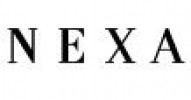Filter interviews by
Bajaj Motors CNC Machine Operator Interview Questions and Answers
Bajaj Motors CNC Machine Operator Interview Experiences
2 interviews found
- Q1. Can you tell me about yourself?
- Q2. Are you able to work for 12 hours?
- Ans.
Yes, I am able to work for 12 hours and am committed to maintaining productivity and focus throughout the shift.
I have experience working long shifts in previous roles, such as during peak production times.
I prioritize my health and take necessary breaks to stay energized and focused.
I am accustomed to the physical demands of operating CNC machines for extended periods.
In my last job, I often volunteered for overtime, ...
Interview Preparation Tips
I applied via Campus Placement and was interviewed before Sep 2020. There were 4 interview rounds.
Interview Questionnaire
4 Questions
- Q1. Turning coding?
- Ans.
Turning coding refers to the programming of CNC machines for turning operations.
Turning coding involves creating a set of instructions for the CNC machine to follow during the turning process.
This includes specifying the cutting tools to be used, the speed and feed rates, and the path the tool will take.
The code is typically written in G-code, a standardized programming language for CNC machines.
Examples of turning ope...
- Q2. Facing coding etc..
- Q3. They Asked me about the measuring instruments and it's least count?
- Ans.
Measuring instruments are essential for precision in CNC machining, each with a specific least count for accurate measurements.
Vernier Caliper: Least count is 0.02 mm, used for measuring internal and external dimensions.
Micrometer Screw Gauge: Least count is 0.01 mm, ideal for measuring small diameters.
Dial Indicator: Least count is 0.01 mm, used for measuring small distances or variations.
Height Gauge: Least count is ...
- Q4. And many more.?
Interview Preparation Tips
Skills evaluated in this interview
Top trending discussions






Interview questions from similar companies

CNC Machine Operator Interview Questions & Answers
VE Commercial Vehiclesposted on 15 Jan 2022
I applied via Campus Placement and was interviewed in Dec 2021. There was 1 interview round.
Interview Questionnaire
1 Question
- Q1. CNC operator training me kya kam hota h
- Ans.
CNC operator training involves learning machine operation, programming, safety protocols, and quality control for precision manufacturing.
Understanding CNC machine components and their functions, such as spindles and tool changers.
Learning to read and interpret technical drawings and blueprints to set up machining tasks.
Gaining skills in programming CNC machines using G-code and M-code for automated operations.
Practici...

I applied via Company Website and was interviewed in Aug 2022. There were 2 interview rounds.

(3 Questions)
- Q1. CNC basic knowledge milling cutting drilling typing boring
- Q2. CNC operator CNC operator and and drilling cutting boring milling and quality and production and main power knowledge
- Q3. Safety quality production and main power handle to me
Interview Preparation Tips

CNC Machine Operator Interview Questions & Answers
Hyundai Motor India Limitedposted on 5 May 2023
I applied via Campus Placement and was interviewed before May 2022. There were 3 interview rounds.

(1 Question)
- Q1. Explain to engine process?
- Ans.
Engine process refers to the series of steps involved in the manufacturing of engine parts.
The process involves designing and prototyping the engine parts
The parts are then manufactured using CNC machines
The parts are assembled and tested for quality and performance
The final product is then packaged and shipped to the customer
Examples of engine parts include pistons, crankshafts, and cylinder heads
(1 Question)
- Q1. Any three types of gears name ?
- Ans.
Three types of gears are spur gears, helical gears, and bevel gears.
Spur gears have straight teeth and are used for low-speed applications.
Helical gears have angled teeth and are used for high-speed applications.
Bevel gears have cone-shaped teeth and are used for changing the direction of power transmission.
Interview Preparation Tips
Skills evaluated in this interview

CNC Machine Operator Interview Questions & Answers
VE Commercial Vehiclesposted on 27 Jun 2024
(2 Questions)
- Q1. Family background
- Q2. Work experience

CNC Machine Operator Interview Questions & Answers
VE Commercial Vehiclesposted on 23 Jan 2024
I applied via Walk-in and was interviewed before Jan 2023. There was 1 interview round.
(1 Question)
- Q1. Can you used coolent
- Ans.
Yes, coolant is commonly used in CNC machine operations.
Coolant is used to lubricate and cool the cutting tool and workpiece during machining.
It helps to prevent overheating and prolongs tool life.
Different types of coolants are available, such as water-based or oil-based.
Coolant also helps in chip evacuation and improves surface finish.
Examples of coolants include water-soluble oils, synthetic fluids, and emulsions.

Production Operator Interview Questions & Answers
Hero Motors Companyposted on 23 Oct 2024
I applied via Company Website and was interviewed in Sep 2024. There was 1 interview round.
(7 Questions)
- Q1. What is emf? volt and watt different
- Ans.
EMF stands for electromotive force, which is the voltage generated by a source such as a battery. Volt is the unit of measurement for voltage, while watt is the unit of measurement for power.
EMF is the voltage generated by a source of electrical energy, such as a battery
Volt is the unit of measurement for voltage, representing the potential difference between two points in a circuit
Watt is the unit of measurement for p...
- Q2. What difference hidrulic and hidrulic Machine?
- Ans.
Hydraulic machines use fluid power to perform work, while hydraulic machines are machines that utilize hydraulic power.
Hydraulic machines use fluid power to generate force and motion, such as hydraulic presses and hydraulic cylinders.
Hydraulic machines are machines that utilize hydraulic power, such as excavators and forklifts.
Hydraulic machines are often used in heavy-duty industrial applications, while hydraulic mach...
- Q3. What is definition of machine
- Ans.
A machine is a device that uses energy to perform a specific task or function.
A machine is typically made up of various components that work together to achieve a desired outcome
Machines can range from simple tools like a hammer to complex systems like a computer
Examples of machines include cars, washing machines, and robots
- Q4. How work 2 stroke or 4 stroke ingine ?
- Ans.
2 stroke engines have a power cycle with two strokes (up and down) of the piston in one revolution, while 4 stroke engines have four strokes (intake, compression, power, exhaust) in two revolutions.
2 stroke engines have a simpler design with fewer moving parts compared to 4 stroke engines
2 stroke engines require a mixture of oil and fuel for lubrication, while 4 stroke engines have a separate oil reservoir for lubricat...
- Q5. Columa law? difine and rincople
- Ans.
Coloumb's Law describes the electrostatic force between charged particles, proportional to their charges and inversely to the square of distance.
Coloumb's Law formula: F = k * |q1 * q2| / r^2, where F is the force, q1 and q2 are charges, r is distance, and k is Coulomb's constant.
Example: Two charges of +1 C and -1 C separated by 1 meter exert a force of 8.99 x 10^9 N towards each other.
The law illustrates that as the ...
- Q6. principle of least count ?
- Ans.
The principle of least count is the smallest measurement that can be made by a measuring instrument.
It is the smallest increment that can be measured by the instrument.
It is determined by the precision of the instrument.
For example, a ruler with markings at every millimeter has a least count of 1 mm.
In a digital caliper with a resolution of 0.01 mm, the least count is 0.01 mm.
- Q7. vernier caliper and vernier scale define?
- Ans.
Vernier caliper is a measuring tool used to take precise measurements, with a vernier scale providing additional accuracy.
Vernier caliper is a tool used for measuring dimensions accurately.
It consists of a main scale and a vernier scale for more precise readings.
The vernier scale allows for measurements to be taken to a higher degree of accuracy than just the main scale alone.
Commonly used in engineering, manufacturing...
Skills evaluated in this interview

CNC Turning Operator Interview Questions & Answers
Hero Motors Companyposted on 11 May 2025
I appeared for an interview before May 2024, where I was asked the following questions.
- Q1. Type of offsets
- Ans.
Offsets in CNC turning are adjustments made to tool paths for precision machining.
Tool Offset: Adjusts the position of the cutting tool relative to the workpiece.
Work Offset: Defines the origin point of the workpiece in the machine's coordinate system.
Wear Offset: Compensates for tool wear over time to maintain accuracy.
Geometry Offset: Accounts for the shape and size of the tool being used.
- Q2. Know about air gauge unit

Machine Operator Interview Questions & Answers
Hyundai Motor India Limitedposted on 16 Jun 2024
I applied via Walk-in and was interviewed in Dec 2023. There was 1 interview round.
(2 Questions)
- Q1. My Work in First safety improvement
- Q2. My Best Improvement for Production
Interview Preparation Tips
Bajaj Motors Interview FAQs
Tell us how to improve this page.
Bajaj Motors Interviews By Designations
- Bajaj Motors Diploma Trainee Engineer Interview Questions
- Bajaj Motors CNC Machine Operator Interview Questions
- Bajaj Motors DET Interview Questions
- Bajaj Motors Quality Engineer Interview Questions
- Bajaj Motors Assistant Engineer Interview Questions
- Bajaj Motors Production Interview Questions
- Bajaj Motors Manager Interview Questions
- Bajaj Motors Assurance Assistant Interview Questions
- Show more
Interview Questions for Popular Designations
- Machine Operator Interview Questions
- Plant Operator Interview Questions
- Production Operator Interview Questions
- CNC Operator Interview Questions
- Senior Operator Interview Questions
- VMC Operator Interview Questions
- VMC Machine Operator Interview Questions
- Packaging Machine Operator Interview Questions
- Show more
Overall Interview Experience Rating
based on 1 interview experience
Interview Questions from Similar Companies
Bajaj Motors CNC Machine Operator Reviews and Ratings
based on 4 reviews
Rating in categories
|
Diploma Trainee Engineer
257
salaries
| ₹1.2 L/yr - ₹3.1 L/yr |
|
Junior Engineer
132
salaries
| ₹1.7 L/yr - ₹4.6 L/yr |
|
Junior Executive
87
salaries
| ₹1.8 L/yr - ₹4 L/yr |
|
Quality Engineer
84
salaries
| ₹1.2 L/yr - ₹3.6 L/yr |
|
Quality Inspector
78
salaries
| ₹1.3 L/yr - ₹3.2 L/yr |

Hyundai Motor India Limited

VE Commercial Vehicles

Honda

Yamaha Motor
- Home >
- Interviews >
- Bajaj Motors Interview Questions













